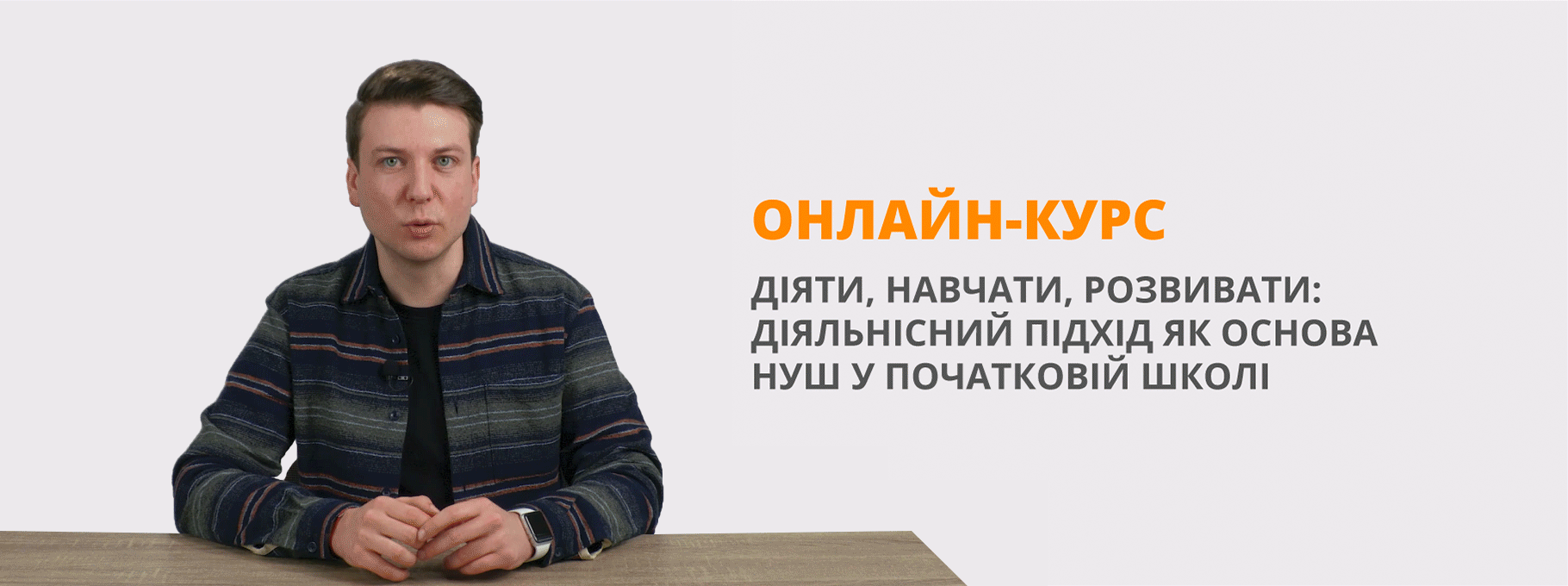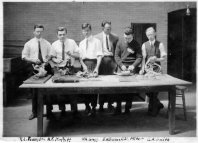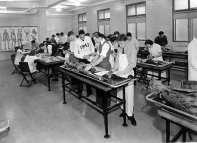Розробка практичного заняття для студентів - медиків "Human Body"
Комунальний заклад « Бериславський медичний коледж»
Херсонської обласної ради
Методична розробка практичного заняття з англійської мови ( за професійним спрямуванням)за темою : « Human Body (Людське тіло та його структура) »
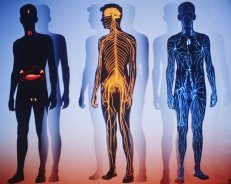
м. Берислав
НАВЧАЛЬНО – МЕТОДИЧНА КАРТКА ЗАНЯТТЯ
Тема : «« Human Body (Людське тіло та його структура) »
Курс: II ( ІII семестр)
Спеціальність: « Лікувальна справа»
Кількість навчальних годин : 2
Місце проведення: кабінет англійської мови
Вид заняття : практичне
Тип заняття : формування знань, умінь і навичок
Забезпечення заняття:
- English for Medical Students - Англійська мова для студентів-медиків: підручник / А.Г. Саблук, JI.B. Левандовська. - К.: ВСВ «Медицина», 2012. С . 262 – 266;, 2008, с. 50 -52 ;
- Videos:
- Sites
- Human Anatomy Online
- , Basic Human Anatomy
- Anatomical Images
- Human Anatomy
- Human Anatomy Dissection
- Atlas of Human Anatomy
- Anatomic Images Online
4.Cards with Idioms
1 Актуальність теми: Знання внутрішньої і зовнішньої будови тіла людини розкривають перед майбутніми медичними працівниками всі їх цілі і направленість дій . Ці знання складають одну з основ теоретичної підготовки студентів – медиків. Від їх якості та глибини залежить правильність діагностики і , як наслідок, ефективність лікування, здорв’я та життя хворого Знання структури тіла людини використовуються як при загальному огляді пацієнта, так і при складних хірургічних операціях, а анатомія, яка вивчає будову тіла людини , напряму переплітається з усіма медичними науками : кардіологією, ендокринологією, онкологією, гінекологією, педіатрією, гістологією та ін..
2 Навчальні цілі:
- ознайомити з лексичним матеріалом теми та практикувати його у вживанні;
3 Розвиваючі цілі:
- розвивати навички читання, письма , говоріння, аудіювання;
- формувати навички вимови та мовленнєву реакцію студентів;
- розвивати навички контролю та взаємоконтролю;
- формувати навички роботи в парах та групах;
- розвивати в студентів пам'ять, увагу кмітливість, здогадку;
- спонукати до критичного мислення
4 Виховні цілі :
- виховувати культуру спілкування;
- виховувати професійну етику та компетентність майбутніх медичних працівників;
- виховувати зацікавленість у розширенні своїх знань та вивченні іноземної мови .
- Методи навчання:
І. Методи організації та здійснення навчально -пізнавальної діяльності:
- За джерелом передачі та сприйняття навчальної інформації:
- словесний;
- наочний.
2. За логікою передачі та сприйняття навчальної інформації:
- індуктивний;
- дедуктивний.
3. За характером пізнавальної діяльності:
- репродуктивний;
- частково-пошуковий.
4. Проблемно-розвиваючі та активного навчання:
- діалогове проблемне викладання;
- евристичний метод.
ІІ. Методи стимулювання та мотивації навчальної діяльності:
- створення ситуації зацікавленості.
ІІІ. Методи контролю та самоконтролю за ефективністю навчально-пізнавальної діяльності:
- взаємоконтроль;
- самоконтроль
6 Міжпредметні зв’язки: анатомія.
7 Очікувані результати реалізації заняття:
Студенти повинні знати:
- лексичний матеріал до теми (структуру людського організму, називати основні системи тіла людини та їх основні функції);
Студенти повинні вміти:
- вживати лексичний матеріал під час мовлення та письма;
- знаходити зв'язок між лексичними одиницями та застосовувати їх у мовленні;
- розрізняти терміни « анатомія», « фізіологія», « патологія»
- вести мову про системи людського організму та їх основні функції;
- розрізняти метаболізм та інші процеси організму;
-здобувати необхідну інформацію під час аудіювання та читання тексту;
- усно і письмово висловлювати власні думки відповідно до теми;
8 План та організаційна структура заняття:
|
№ з/п |
Основні етапи заняття. Їх функції та зміст |
Методи та прийоми контролю і навчання |
Матеріали метод забезпечення: контроль, наочність,ТЗН, інструкції, обладнання |
Час в хвилинах |
|
1
|
Greeting and Aim
|
Бесіда
|
|
1 хв
|
|
2 |
The Main Part Brainstorming
|
Topic Circle Star –bursting
|
Опорні схеми
|
10хв.
|
|
3 |
Vocabulary |
Демонстрація, пояснення, метод перекладу |
English for Medical Students - Англійська мова для студентів-медиків: підручник / А.Г. Саблук, JI.B. Левандовська. - К.: ВСВ «Медицина», 2012. С . 262 - 263 Впр. 1 |
10 хв |
|
4 |
Video
|
Перегляд та обговорення,комунікацуійний метод, виконання вправ |
10 хв
|
|
|
5 |
Reading
|
Метод перекладу, обоворення. Виконання післятекстових вправ |
English for Medical Students - Англійська мова для студентів-медиків: підручник / А.Г. Саблук, JI.B. Левандовська. - К.: ВСВ «Медицина», 2012. С . 263 – 264 В |
10 хв |
|
6 |
SpeakingGroup Work
|
Комунікативний метод. Опис. Демонстрація |
Фото та відео https://www.youtube.com/watch?v=zDrLMgYZcac
|
12 хв |
|
7 |
Pair Work (робота з сайтами) |
Комунікативний метод, практичний, пояснення, демонмтрація, обговорення |
|
13 хв |
|
8
|
Work with Idioms
|
Демонстрація, поясненняю обговорення |
Картки з ідіомами
|
10 хв |
|
9 |
Заключний етап Оцінювання |
Оцінювання і взаємооцінювання |
|
1 хв |
|
10 |
Рефлексія |
Бесіда, відповіді на питання |
Опорна схема |
2 хв |
|
11 |
Домашнє завдання |
Пояснення |
Матеріали домашнього завдання |
1 хв |
Procedure
I Greeting and Aim.
T: Good morning students! Glad to see you! The theme of our classes today is “Human Body”
After careful study of this unit, you should be able to:
- define the terms of anatomy, physiology, and pathology;
- describe the organization of the body from cells to the whole organism;
- name 10 body systems; give the general function of each;
- define metabolism and other processes;
- differentiate between extracellular and intracellular fluids;
- briefly explain the role of ATP in the body;
- list and define the main directional terms for the body.
II The Main Part
1 Brainstorming
- Topic Circle
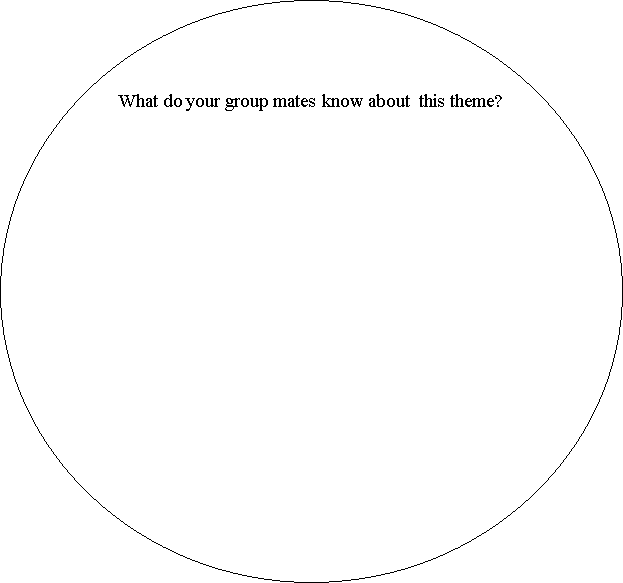
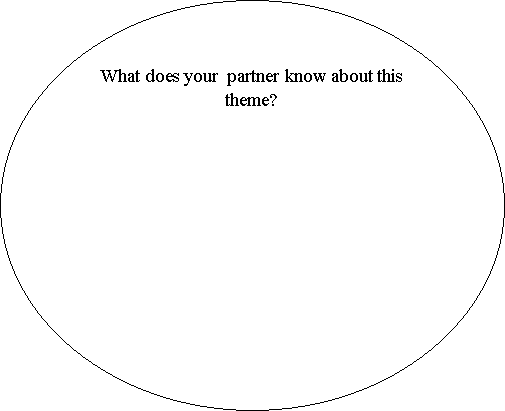
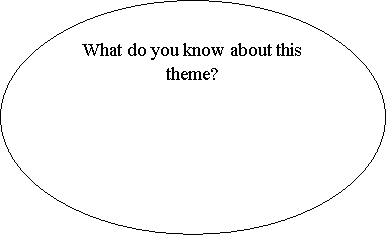

- Star –bursting
Who studies
human body?
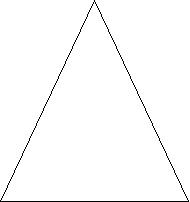
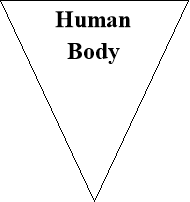
Why do we study What do we study
human body? in human body?
How do we study Where can we study about
human body? human body?
When do we study
human body?
- Vocabulary
T: Learn the following words and word combinations. anabolism - анаболізм
anatomy - анатомія
ATP - (adenosine triphosphate АТФ (аденозин-трифосфорна кислота)
catabolism - катаболізм
cell - клітина
homeostasis - гомеостаз
metabolism - метаболізм
organ - орган
pathology - патологія
physiology - фізіологія
tissue - тканина
muscular - м’язовий
systems - системи (органів):
circulatory - кровообігу
digestive - травна
respiratory - дихальна
integumentary - покривна
urinary, excretory - сечовидільна
nervous - нервова
endocrine - ендокринна
glands - залози
hormones - гормони
reproductive - відтворювальна, статева
- Video
(https://www.youtube.com/watch?v=Ae4MadKPJC0)
3,1 Watch the video and answer the questions
- What are the main systems of the body?
- What systems are regulating the body?
- What is the other name of the lymphatic system?
- What is coordinating center of all body?
- Are all systems working together?
3.2 Pair work. Match the system and its divination.
|
Skeletal System |
|
|
Cardiovascular System |
delivers:
|
|
Nervous System |
Communication network of nerve cells that the body use to transmute the information. |
|
Endocrine System |
Series of glands that help regulate the body’s processes/ |
|
Lymphatic System |
Collection of lymph nodes and vessels that help to regulate the body’s defenses. |
|
Urinary System |
|
|
Respiratory System |
Group of passageways and organs that extract oxygen from the air. |
- Reading
1) Translate the text, title it.
2) Write out the underlined words, add them to your vocabulary, translate them.
3) Ask your fellow student about each system of the body and its functions in the organism
Everyone is interested in the body and how it works. Anatomy studies the body structure. Physiology is the term for the study of how the body functions. These two sciences are closely related. They form the basis for all medical practice.
Any changes in the structure of the body or its functions are considered a disease and are studied as a science of pathology.
All living things are organized from very simple levels to more complex levels. Living matter begins with simple chemicals. These chemicals are formed into complex substances that make living cells - the basic units of all life. Specialized groups of cells form tissues, and tissues may function together as organs. Organs make up systems of organs, which maintain the body.
There are following systems of organs in the body:
- skeletal system (it supports the body);
- muscular system (it allows the body to move);
- circulatory system with lymphatic system transport nutrients, oxygen and other substances to the body cells and carry away waste materials;
- digestive system (it takes food in and converts it into substances that the body cells can use);
- respiratory system (it takes oxygen in and releases carbon dioxide from the blood);
- integumentary system means the skin and its appendages: hair, nails, sweat and oil glands;
- urinary or excretory system (it eliminates waste products and water);
- nervous system (it receives stimuli and controls responses; memory and reasoning also belong to the nervous system occurring in the brain);
- endocrine system (it produces hormones for regulation of growth, metabolism, reproduction);
- reproductive system is concerned with the production of offsprings.
All the chemical reactions needed to sustain life we call metabolism. Metabolism can be divided into two types of activities: catabolism and anabolism.
Catabolism is the breakdown of complex substances into simpler ones. Anabolism is the building of body materials.
The energy obtained from the breakdown of nutrients is used to form a compound of the cell we call ATP (adenosine triphosphate).
There are many kinds of fluids in the organism. Extracellular fluids carry nutrient substances to and from the cell, bathe the cell, transport substances in and out of the cell. Intracellular fluid is in the cell.
Homeostasis is the steady state of the organism that maintains a state of balance within the body: body temperature, composition of body fluids, heart rate, respiration rate, blood pressure. Homeostasis is maintained by feedback. Any changes in the body balance lead to norm violation, this mechanism is described as negative feedback.
6 After reading Activities
- Are the sentences true or false?
- Anatomy is the study of how the body functions.
- Pathology is the science of diseases.
- The smallest unit in the organism is the cell.
- An organ is the unity of tissues that functions together.
- Homeostasis is the balance in the organism.
- Intracellular fluid carries nutrients to the cells.
- Speaking. Group Work
T: What science studies structure of Hyman Body?
7.1 Look at the photos and try to describe them.
|
|
|
|
1916 |
1943 |
7.2 Watch the videos and describe the modern virtual lab for studding anatomy.
https://www.youtube.com/watch?v=zDrLMgYZcac
- Pair work
T : Serf to one of these sites and say what information can we find there .
- Human Anatomy Online: Full interactive lessons covering the head and neck, thorax, abdomen, back, upper extremity, lower extremity, and more.
- Visible Body: Students can use this site to learn the names and relative locations of over 2,400 structures in the body.
- Basic Human Anatomy: Human anatomy tutorial on the upper limb, lower limb, thorax, pelvis, and more with links to corresponding illustrations.
- Anatomical Images: Offers high quality images of the head and neck, chest, abdomen and pelvis, leg, and more.
- Human Anatomy: Interactive modules on the skeletal system, muscular system, digestive system, circulatory system, and more.
- Human Anatomy Dissection: Online lectures on vertebral column, spinal cord/coverings, human skull, mediastinum and heart, and so on.
- Atlas of Human Anatomy: Excellent collection of atlases covering many parts of the human body.
- Anatomic Images Online: Provides various high resolution cryosectional diagrams of human anatomy in vivid colors.
9 Group working ( Studying body idioms)
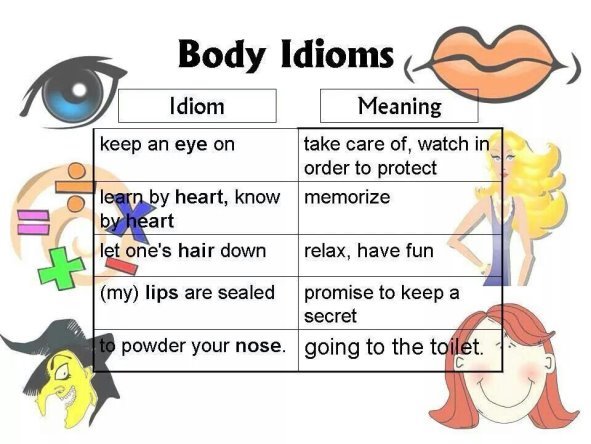
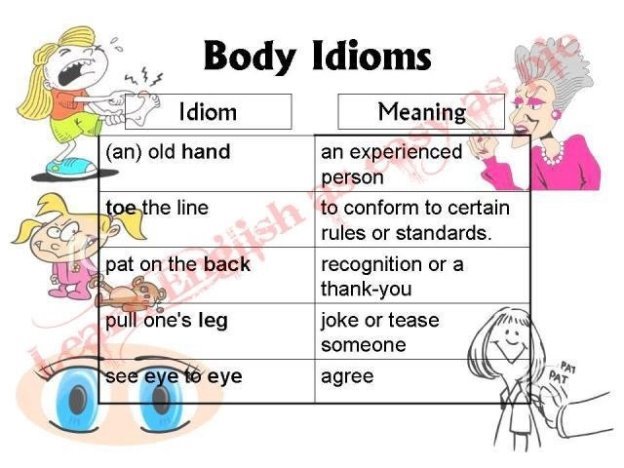
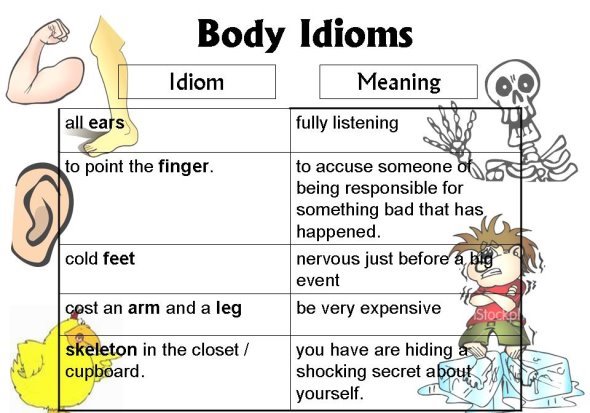
III The Ending.
1 Summarizing
Answer the following questions:
- What are three studies of the human body?
- What is the cell? Tissue? Organ? System? (Give the definitions.)
- Can you name 10 systems of organs? What are they?
- What is metabolism?
- What is the difference between anabolism and catabolism?
- What is ATP?
- Can you give an example of homeostasis? How does homeostasis maintain?
- What do we mean by “negative feedback”?
2.Hometask
Learn the vocabulary and be ready to speak about the structure of human body.


про публікацію авторської розробки
Додати розробку
